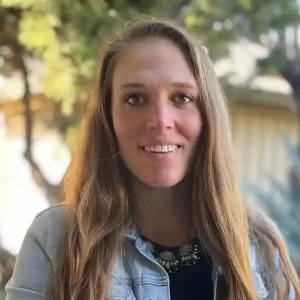The role of a therapist in family conflict resolution is to guide family members through tough talks and help them find ways to solve problems together. As a neutral voice, therapists in Sacramento case studies will arrange safe spaces for all to express feelings. They employ effective strategies such as active listening, goal setting, and clear talk instruction to guide families through pain or tension. Other therapists in these studies assist in identifying patterns that perpetuate conflict and propose methods to alter them. Using these techniques, therapists assist families develop trust and collaborate as a unit. To demonstrate how these steps play out in reality, the upcoming sections will employ real Sacramento case studies.
Key Takeaways
- Therapists play a crucial role in family conflict resolution by acting as neutral facilitators, identifying unhealthy patterns, coaching communication, setting boundaries, and inspiring positive change within family systems.
- Moreover, therapists must be culturally sensitive in their practice of conflict resolution, tailoring their strategies to accommodate different cultural contexts to make interventions impactful and inclusive across diverse family traditions.
- Typical family feuds are caused by a communicative impasse, generational misunderstanding, ambiguous boundaries, and cross-cultural misinterpretation. Tackling these early is critical in not letting them explode and favoring a permanent resolution.
- The systemic, cognitive-behavioral, and narrative models can each provide advantages to families, allowing for customized approaches that consider individual and family needs.
- In these complex situations, therapists must contend with ethical dilemmas, including confidentiality, informed consent, and balancing honesty with sensitivity. They should always prioritize trust and the well-being of all family members involved.
- Sustainable family growth is beyond the therapy office–involving deep ties to community resources, schools, and the legal system to nourish ongoing development and resilience.

The Therapist’s Core Function
The core function of the therapist in family conflict resolution is to look at the entire group, not only one individual. They need to identify mental illness, maintain safety, and assist families in disrupting patterns that lead to disputes. Their job is to make hard decisions quickly, to figure out what’s behind the issues, and to steer the family in the direction of practical, solution-oriented thinking that can endure. Below are the key functions a therapist covers during family therapy:
- Diagnose mental disorders affecting the family unit.
- Prioritize safety by making fast, informed decisions.
- Analyze group dynamics to design workable plans.
- Examine family communication, not just individual struggles.
- Focus on solutions and set goals for growth.
- Use mental health diagnosis to guide treatment.
- Recognize when outside help is needed for ongoing issues.
Neutral Facilitator
As a therapist, it’s important to remain impartial so every voice can be acknowledged. They ensure no one’s excluded, even if relatives have strong or opposing views. Passions can flare and divide people in groups, but it’s the therapist’s role to maintain equilibrium, directing the discussion so no one is accused or targeted.
Through remaining impartial, therapists assist families transition from blame to collaborative resolution. In Sacramento case studies, families say they feel safer to speak openly when the therapist doesn’t play favorites. This trust allows families to voice fears and address conflicts as a family.
Pattern Identifier
Therapists look for patterns of behavior—like a brother who always instigates, or parents who respond the same way whenever an issue arises. These rhythms reveal where things derail and what fuels the impasse.
They highlight how an individual’s difficulties could be representative of a larger family issue, not simply an individual issue. This wide perspective reminds families that the solution requires everyone’s investment — not just a fast fix for one person. Based on tools such as family genograms or structured interviews, therapists diagram problems and reveal patterns that may not be initially apparent.
Recognizing these patterns is essential to disrupting them. If a parent’s stress provokes strong words, which then provoke a child’s acting out, then the therapist demonstrates how to interrupt the cycle before it begins.
Communication Coach
As therapists teach families to listen—not just reply, but understand. They demonstrate basic techniques, like allowing one person to speak at a time, or employing “I” statements to communicate your feelings without assigning blame.
Sessions are where practice occurs. The therapist may role play a hard conversation between parent and teen, modeling specific, cool ways to communicate. They emphasize practical application–families are encouraged to conduct weekly meetings at home to continue constructing these skills.
Therapists hand out worksheets, recommend ‘pause and listen’ exercises, and monitor progress. Through the years, families come to know not just how to speak but listen, reducing bickering.
Boundary Setter
Therapists collaborate with families to establish boundaries that maintain respect for all. They assist parents in taking a step back from micromanaging teens, or prod silent members to speak up when necessary.
When roles become jumbled — like a child serving as mediator for parents — the therapist softly reestablishes these roles for more nutritious bonds.
Therapists assist families in establishing explicit guidelines regarding privacy, household responsibilities, and individual time.
Even one rule, such as ‘knock before entering,’ can increase trust.
Change Agent
Therapists show families that change is worth the effort.
They reduce big aspirations to little steps, causing change to feel manageable.
Therapists have each individual take responsibility and report back on advancement.
Celebrating small wins keeps families moving forward.
Sacramento Case Study Insights
Therapists play a big role in assisting Sacramento families in navigating conflict. Local case studies provide an up-close view of trends, obstacles, and what works. Information from Sacramento’s mental health court case study monitors how counseling can transform life quality, security, and family relationships, particularly for individuals confronted with grave judicial and psychological challenges.
Common Themes | Observed Issues | Example Scenario |
Generational gaps | Escalation of disputes | Parent-teen disagreements |
Cultural clashes | Misunderstandings | Differing holiday traditions |
Mental health stress | Erosion of trust | Impact of untreated depression |
Communication gaps | Poor conflict skills | Sibling rivalry over responsibilities |
Cultural Nuances
Cultural backgrounds influence the way families communicate, fight, and reconcile. Most of Sacramento’s families come with values from across the globe. Therapists observe that parents from certain cultures hold rigid beliefs about roles — beliefs that sometimes conflict with teens raised in a new environment. This friction can breed miscommunication.
Therapists try to honor these distinctions. They switch up the way they direct sessions, occasionally bringing in translators or community elders. They assist families to discuss their perspectives in a manner that respects both tradition and transition. In one instance, an East Asian family resolved a tension about discipline approaches by sharing anecdotes from their native country and life now. The therapist allowed them to each describe what respect meant to them. It simplified finding a family consensus.
Common Conflicts
- Generational role disputes
- Cultural adjustment struggles
- Financial stress
- Mental health and substance use
- Communication breakdowns
I know older generations and younger generations often see things differently. A grandparent may want obedience, a teen more freedom. If these gaps are not addressed early, little fights can escalate quickly. In a recent Sacramento case, a father and son battled over school decisions. The therapist intervened, assisted both to communicate their objectives, and directed them to a middle ground. Nipping problems in the bud keeps relationships from being permanently scarred.
Measured Success
- Clear goals set for each family member
- Regular check-ins and progress reviews
- Reduction in conflict frequency
- Positive feedback from family
Therapists check in with families during fixed intervals, inquiring what’s improved and what still aches. Through the Sacramento case study, even the most legally deceased among its subjects experienced less violent incidents and enjoyed their daily lives more. It’s not that these families no longer have problems — after months of therapy they still talk more, fight less and feel safer at home.
As the case studies demonstrate, given time and effort, most families experience actual conversion. As one couple suffering through distress and depression discovered, their moods and marriage transformed after therapy, illustrating the connection between mental health and family harmony.
Therapeutic Models in Action
Family therapy today mixes classic and modern models, informed by research and evolving needs. In Sacramento, therapists employ a variety of approaches to suit each family’s narrative. Techniques and modalities change, but the emphasis remains on tangible results—less discord, more loyalty, and resilience techniques that endure.
Model | Core Method | Typical Use | Example in Practice |
Systemic Therapy | Focus on whole family system | Disrupt cycles of blame | Map patterns, shift roles, break repeating fights |
Cognitive-Behavioral | Change thoughts and behaviors | Address symptoms, teach skills | Help with anxiety, substance use, or depression in family members |
Narrative Therapy | Re-author family stories | Build new shared identities | Help families see themselves as resilient, not broken |
Relational Neuroscience | Explore attachment, brain response | Deepen bonds, secure base | Teach couples about triggers, help them build safer connections |
Tech-integrated Models | Use digital tools for sessions | Increase access, engagement | Video calls, secure chat, social media for check-ins and homework |
Systemic therapy is distinguished because of its comprehensiveness. It looks past the individual, observing how one person’s behavior impacts the collective. In Sacramento case studies, systemic therapy shattered cycles in which blame and misunderstanding had accumulated for years. By charting these cycles–who retreats, who screams, who arbitrates–therapists helped clans identify their part in the battle. This outside perspective frequently facilitated each member to back and experiment with new responses. Systemic therapy’s focus on the “system,” not simply fixing the problem, helps families create real change.
Cognitive-behavioral techniques (CBT) are interlaced throughout numerous family sessions, notably when one or more members struggle with depression, anxiety, or addiction. CBT assists families identify how thoughts fuel behavior. In the field, a Sacramento therapist could train a family to take a breather before responding to a teen’s aggression, or to draw small achievable objectives for an addict. Couples facing chronic health issues or stress, for example, often rely on CBT to acquire coping mechanisms. By leveraging online platforms, these tools become even more accessible and allow therapists to bolster families between sessions.
Narrative therapy contributes its own dimension by assisting families in reformulating their collective narrative. So many families enter feeling trapped—branded by old errors or unwanted parts. By working with a therapist, they can select strengths and times when it worked. Transforming the family legend can redirect blame, nurture compassion, and render members receptive to transformation. Cultural sensitivity and inclusion are now paramount, with therapists educated to respect every family’s beliefs, heritage and identity.
Navigating Ethical Dilemmas
For therapists involved in family conflict cases, these situations often present complex ethical decisions that demand careful thought, especially when working with families from diverse cultural and religious backgrounds. In Sacramento, case studies show that therapists must balance confidentiality with the need to build trust across all family members. This makes it essential to clarify what can be shared and when, so each person feels secure while understanding the boundaries of privacy. Therapists must also disclose that in certain cases—such as suspected child sexual abuse—they are legally required to report it to the proper authorities. This isn’t just a law; it’s a duty that overrides family preferences.
Conflicts of interest can arise when a therapist works with multiple family members. Remaining impartial is challenging, and it’s critical for the therapist to clearly define their role with each individual from the start. This may involve holding separate sessions or referring someone to a different therapist to avoid mixed messages. The situation becomes even more delicate in tight-knit communities, such as some Muslim families, where Islamic ethics play a significant role in shaping moral decisions. In these cases, therapists often need to balance what’s best for the family unit with the spiritual values that guide their clients. Teachings like those found in fiqh al-bāṭin emphasize that the therapist must act with care and prioritize the family’s well-being, both in this life and the next.
Obtaining informed consent from everyone involved isn’t just a formality. Each participant needs to understand what therapy involves, what their rights are, and what may happen during the process. This goes beyond getting a signed document—it requires honest conversations and clear answers to questions. When working with families from different backgrounds, therapists may need to slow down, avoid jargon, and use relatable examples to ensure understanding.
Therapists also walk a fine line between honesty and compassion. Tensions can escalate if someone feels blamed or singled out. It’s the therapist’s job to present information in a constructive way. Even small issues, like how sessions are scheduled or rescheduled, can trigger feelings of resentment, mistrust, or perceived bias. Every step of the process should be handled with transparency, fairness, and respect for both legal obligations and cultural or religious values.

Beyond the Therapy Room
Family conflict is not merely a matter of what occurs behind closed doors or in the therapeutic context. It rears its head in all aspects of life, from academic and professional to communal. So many families in Sacramento deal with much more than just arguments. These may be emotional distance, ambivalent beliefs, and even oscillations between closeness and rage. A therapist’s role is to assist families not only in resolving issues within the session, but in linking them to community resources, schools, and legal assistance when necessary. Establishing trust is crucial. Other times, families fret about whether a therapist ‘gets their culture.’ Therapists employ active listening and openness to demonstrate respect and establish trustworthiness, so families feel acknowledged and secure.
Community Links
Therapists assist families with locating nearby groups, such as parents circles, youth sports, or cultural centers. These provide families continued support once the sessions terminate.
They frequently steer families to community activities, like family wellness workshops, where they can connect with other families facing similar challenges. That creates a web. When families feel isolated, hearing stories in support groups reminds them they’re not the only ones facing difficult challenges.
Workshops cover skills such as effective communication and how to apologize—a core ingredient of repair, as researcher Ed Tronick points out. Moments such as these remind us of the magic of repair bids and inspire innovative approaches to dealing with conflict. With every bond, families become stronger and more resilient.
Legal System
In court battles, therapists lead families through the family law labyrinth. They describe what to anticipate, so the family can get ready.
Therapists write reports or attend hearings to ensure family voices are heard in custody or visitation battles. They assist parents in using ‘I’ statements, clarifying their needs without assigning blame. Working with legal teams, therapists align therapy goals with legal needs. That keeps the child’s best interest at the forefront.
Therapists likewise mitigate cultural concerns through translanguaging, providing clear explanations of legal terminology and procedures, fostering trust and comprehension.
School Support
Family tension frequently manifests itself in children’s academic work or conduct. Therapists confer with teachers and counselors to discuss these matters.
They provide parents with tools for supporting children’s academic anxiety. They organize parent and teacher conferences, so everyone is on board. Family engagement programs that bring parents to school activities create a sense of community and give children a feeling of being supported.
Partner Networks
Therapists team up with local organizations.
They share resources.
They create group events.
They build bigger support systems.
When Resolution Fails
Not every family conflict is so easily mended–even with a talented therapist. Therapy might stall or do little to alter. There are indications that prove when this occurs. Cycles repeat, conversation goes in circles, faith falls. Folks may clam up, shut down, or sneak out of sessions before they’re over. Others will feel more stressed or hopeless after each session. When these signs appear, it indicates therapy not going as planned.
When therapy techniques fall short, it’s time to turn to other avenues. Some families attempt group support or community mediation or even try out a new therapist with a different style. As an example, families in Sacramento have attempted alternatives such as moving from talk therapy to art therapy, or family mediation. These shifts can provide clean slates and new perspectives. Sometimes, an outside partner breaks deep patterns. Studies indicate that open conflicts damage mental and physical health, exacerbating stress and anxiety. This implies that it’s important to discover something that works for the family, rather than simply adhering to a single approach.
If anything, families should stop and consider what they’re aiming for in therapy. Not infrequently, what worked as a goal at the beginning, no longer aligns with current needs. Taking time to discuss what everyone desires can assist. That might mean moving away from attempting to repair everything all at once, toward taking smaller steps or simply learning how to communicate without arguing. Goal rescoping can relieve some of that stress and make the experience less intimidating.
When conflict continues to spill out of the therapy room, families require straightforward tools to navigate it. Establishing talk ground rules at home, employing ‘timeout’ breaks for cooling off, or maintaining a conflict journal to track issues can be beneficial. Others use contracts to direct tough conversations. It tends to keep your talks short and to the point, with intermissions when things get heated. If things deteriorate it’s wise to get external assistance, such as a mediator or counselor, before issues become more entrenched.
Conclusion
Sacramento therapists aren’t just talk. They soothe, center, and assist families in confronting actual issues. Each case study outlined actual steps – not just theory. A therapist intervenes, hears and helps people talk, not yell. It is in these sessions that families begin to believe in small changes. One example: a teen and parent both felt heard after months of tension. Cast light, not blame, propelled them ahead. Therapists maintain confidential boundaries because ethical lines matter, so therapists keep trust strong. Even in the breakdown, family discovers new coping ways. To witness actual transformation, select a therapist who aligns with your family and principles. Evolution begins with a single candid conversation. If you’d like help, contact a local therapist or community group and make the next move.
Frequently Asked Questions
1. What is the main role of a therapist in family conflict resolution?
A therapist shepherds family members toward effective communication and understanding. Their primary mission is to guide families in addressing conflicts in a healthy, constructive manner.
2. How do therapists in Sacramento approach family conflicts?
They specialize in cultivating a secure space, hearing out every member and formulating compromises that honor everyone’s needs.
3. Which therapeutic models are most effective in family conflict situations?
Typical efficacious models include family systems therapy, cognitive-behavioral therapy, and solution-focused therapy. These methods assist families in breaking dysfunctional cycles and establishing constructive connections.
4. What ethical dilemmas can therapists face during family therapy?
Therapists occasionally bump into problems such as confidentiality, equitable allocation of attention among each family member, or cultural diversity. They adhere to rigorous ethics to safeguard all parties’ interests.
5. What happens if family therapy does not resolve the conflict?
If therapy doesn’t work, therapists can refer families to other resources. This may involve mediation, individual counseling or community assistance.
6. Can therapy help families outside of the therapy room?
Yes. As a therapist, I frequently instruct your family in skills and strategies you can use in everyday life. These instruments assist in lessening subsequent conflicts and cultivating stronger relationships as well.
7. Are there specific success stories from Sacramento families?
Yes. Numerous Sacramento area families who have gone through therapy say they communicated better and felt more bond. Although each case is different, therapy has assisted numerous families in finding enduring resolution.
Start Your Family’s Healing Journey Today
If your family is feeling stuck in patterns of conflict, silence, or emotional distance, you’re not alone—and you don’t have to face it alone. At the Clinic for Healing and Change, our Sacramento therapists specialize in helping families like yours create lasting change through empathy, structure, and cultural understanding. We create safe, judgment-free spaces where every voice is heard, and where families learn how to communicate, reconnect, and grow together. Whether you’re navigating generational tension, cultural clashes, or ongoing miscommunication, our compassionate team is ready to support you every step of the way. See how real families have transformed with our help—schedule a session with a Sacramento therapist today and start building a healthier future together.





